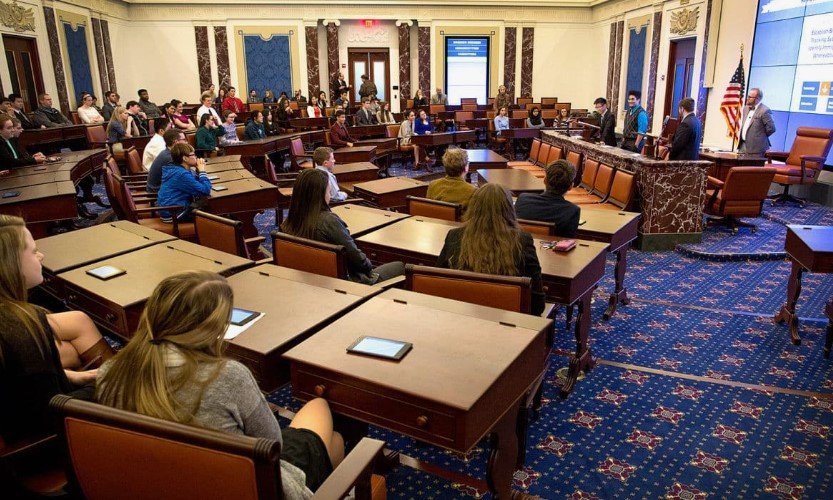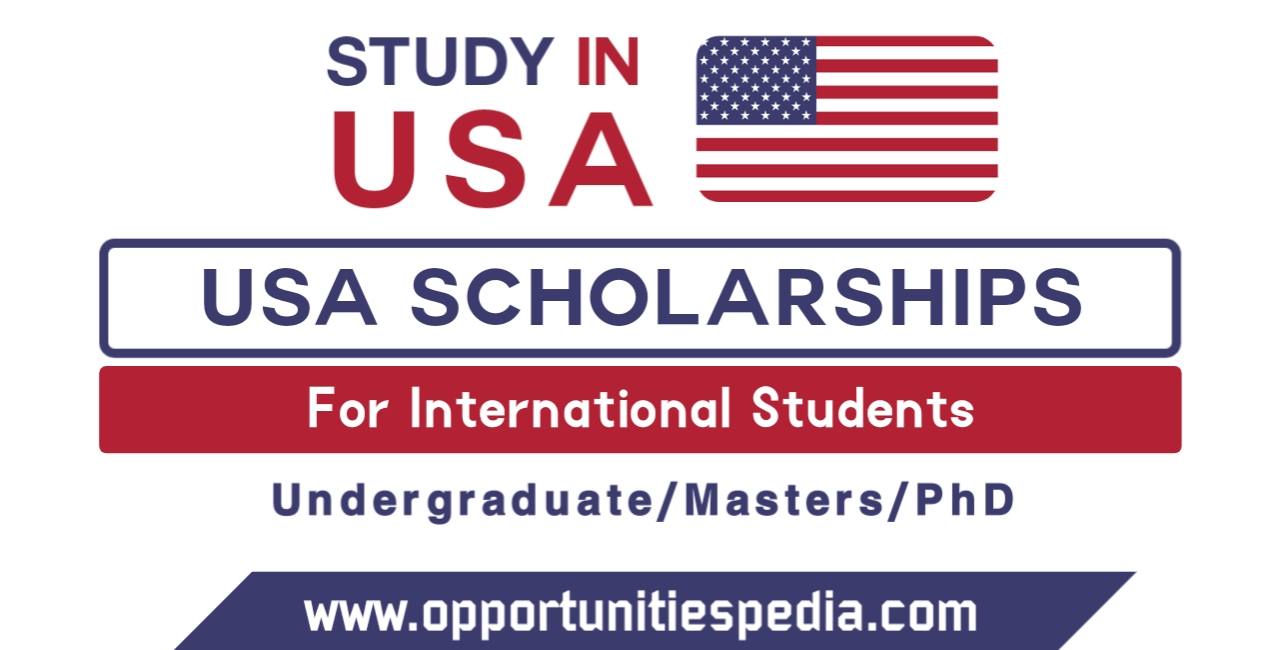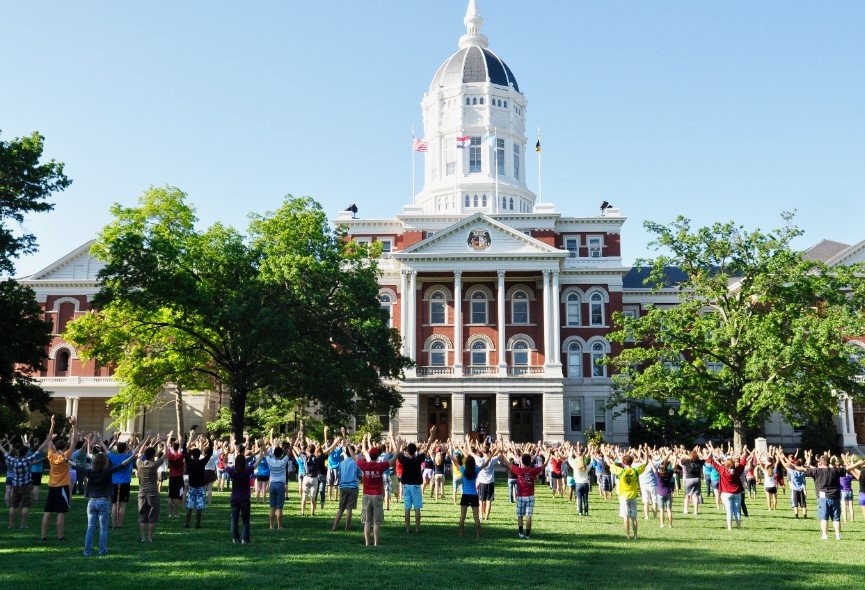Many universities in the USA welcome international students for Master’s programs. Top institutions include Harvard, MIT, Stanford, and UC Berkeley.
Studying for a Master’s degree in the USA offers international students numerous opportunities. Renowned universities provide diverse programs, cutting-edge research, and excellent faculty. The U. S. Education system emphasizes practical experience, preparing graduates for global careers. International students gain exposure to different cultures and perspectives, enriching their academic journey.
Networking with industry leaders and peers fosters valuable connections that enhance career prospects. Scholarships and financial aid options help ease the financial burden. Navigating the application process can be challenging, but resources are available to guide students. Overall, pursuing a Master’s in the USA is a rewarding experience that can shape one’s future.
Top Us Universities
The United States is home to some of the world’s best universities. For international students pursuing their master’s degrees, these institutions offer excellent education and diverse experiences. Top US universities provide a unique blend of academic rigor and cultural richness. They prepare students for global careers and personal growth. In this post, we explore the top schools, focusing on Ivy League and public research universities.
Ivy League Schools
The Ivy League schools are among the most prestigious in the US. They are known for their high academic standards and rich history. Here are some key features of Ivy League schools:
- Excellence in Education: Top-notch faculty and resources.
- Networking Opportunities: Connect with successful alumni.
- Campus Life: Vibrant communities with diverse activities.
Here is a table showcasing the Ivy League schools:
| University | Location | Established |
|---|---|---|
| Harvard University | Cambridge, MA | 1636 |
| Yale University | New Haven, CT | 1701 |
| Princeton University | Princeton, NJ | 1746 |
| Columbia University | New York, NY | 1754 |
| University of Pennsylvania | Philadelphia, PA | 1740 |
| Dartmouth College | Hanover, NH | 1769 |
| Brown University | Providence, RI | 1764 |
| Cornell University | Ithaca, NY | 1865 |
Attending an Ivy League school opens doors. Students gain access to top resources and a global network.
Public Research Universities
Public research universities offer a different yet valuable experience. They provide quality education at a lower cost. These schools focus on innovation and research. Here are some benefits of studying at public research universities:
- Affordability: Lower tuition fees for in-state students.
- Diverse Programs: Wide range of master’s programs.
- Research Opportunities: Engage in groundbreaking research.
Some leading public research universities include:
| University | Location | Established |
|---|---|---|
| University of California, Berkeley | Berkeley, CA | 1868 |
| University of Michigan | Ann Arbor, MI | 1817 |
| University of Florida | Gainesville, FL | 1853 |
| University of Virginia | Charlottesville, VA | 1819 |
| University of North Carolina at Chapel Hill | Chapel Hill, NC | 1789 |
Public research universities excel in research and offer a variety of programs. They create a welcoming environment for international students.
Application Process
Applying to universities in the USA for a master’s degree can be exciting and challenging for international students. The application process is crucial to securing a spot in your desired program. Understanding what is needed can help you navigate this journey smoothly. Each university may have different requirements, but there are common elements to consider.
Required Documents
Gathering the right documents is essential for your application. Most universities require several key items. Here is a list of typical documents you may need:
- Academic Transcripts: Official records from your previous studies.
- Letters of Recommendation: Usually two or three letters from teachers or employers.
- Statement of Purpose: A personal essay explaining your goals and why you chose the program.
- Resume or CV: A summary of your academic and professional experiences.
- Test Scores: GRE, GMAT, or other scores, depending on the program.
- Proof of English Proficiency: TOEFL or IELTS scores for non-native speakers.
Some universities may have specific forms or additional requirements. Always check each school’s website for details.
Here’s a table of common required documents:
| Document Type | Details |
|---|---|
| Academic Transcripts | Official records from all previous institutions. |
| Letters of Recommendation | Two or three letters from credible sources. |
| Statement of Purpose | Your personal essay about goals. |
| Resume or CV | Summary of education and work experience. |
| Test Scores | GRE or GMAT scores, as required. |
| Proof of English Proficiency | TOEFL or IELTS scores for non-native speakers. |
Application Deadlines
Each university has its application deadline. These dates are critical for international students. Missing a deadline can mean waiting another year to apply. Most universities have two main admission periods: Fall and Spring.
Here are some general deadlines:
- Fall Semester: Deadlines range from December to April.
- Spring Semester: Deadlines usually fall between August and October.
Check individual universities for their specific dates. Keep a calendar to track important deadlines. Some programs may have early decision options. This often means earlier deadlines.
Here’s a sample timeline for application deadlines:
| Semester | Typical Deadline |
|---|---|
| Fall | December 15 to April 1 |
| Spring | August 1 to October 1 |
Planning ahead is key. Start your application process early to ensure all documents and requirements are met.
Tuition Costs
Studying for a master’s degree in the USA can be a great opportunity for international students. However, tuition costs often raise concerns. Understanding these costs is vital for making informed decisions. This section explores average tuition fees and available financial aid options.
Average Tuition Fees
The average tuition fees in the USA vary by university and program type. On average, international students can expect to pay between $20,000 and $60,000 per year. Here’s a breakdown:
| Type of University | Average Tuition Fees (per year) |
|---|---|
| Public Universities | $20,000 – $40,000 |
| Private Universities | $30,000 – $60,000 |
Some programs, like those in engineering or business, may have higher fees. Here are some additional details:
- Tuition fees can increase each year.
- Costs may vary based on location.
- Some universities offer lower rates for online programs.
International students should also consider living expenses. These can add another $10,000 to $20,000 annually. This includes housing, food, and transportation. Planning ahead helps manage overall costs.
Financial Aid Options
Many universities offer financial aid to help international students. This aid can make studying in the USA more affordable. Here are some common types of financial aid:
- Scholarships: Many schools provide scholarships based on merit or need.
- Assistantships: Graduate assistants work part-time for the university. This often covers tuition fees.
- Grants: These do not need to be repaid and can help reduce costs.
Students should check each university’s website for specific options. Some popular financial aid resources include:
- University financial aid office.
- Government scholarships.
- Private organizations and foundations.
Applying for financial aid can be competitive. Early applications increase chances of receiving support. Make sure to gather all necessary documents, such as transcripts and recommendation letters. Understanding your options can lead to a more manageable financial path.
Scholarship Opportunities
Many universities in the USA offer fantastic opportunities for international students pursuing a master’s degree. One of the most significant advantages is the variety of scholarship opportunities available. Scholarships can help reduce the financial burden of education. They open doors for talented students from around the world. Understanding these options is crucial for those planning to study in the USA.
Merit-based Scholarships
Merit-based scholarships reward students for their academic achievements and talents. These scholarships are often available for students with strong grades, test scores, or unique skills. Many universities offer these types of scholarships to attract top talent. Here are some key points about merit-based scholarships:
- Eligibility: Usually based on GPA or standardized test scores.
- Application: Students may need to submit essays or portfolios.
- Renewability: Some scholarships are renewable each year based on performance.
Many universities offer merit-based scholarships. Here’s a quick table of a few notable options:
| University | Scholarship Name | Amount |
|---|---|---|
| University of Southern California | USC Merit Scholarship | $15,000 – $30,000 |
| University of Illinois | International Graduate Merit Scholarship | $10,000 |
| Arizona State University | Global Education Grant | $5,000 – $20,000 |
Merit-based scholarships can significantly lower tuition costs. They also enhance a student’s resume. Excelling academically opens up many doors.
Need-based Scholarships
Need-based scholarships help students who face financial challenges. These scholarships consider a student’s financial situation, not just their grades. Many universities want to support students who may struggle to pay for education. Here are some critical aspects of need-based scholarships:
- Application Process: Often requires financial documentation.
- Eligibility: Based on family income and expenses.
- Types: Can include grants, loans, or work-study options.
Several universities offer need-based scholarships for international students. Here’s a quick overview:
| University | Scholarship Name | Amount |
|---|---|---|
| Harvard University | Harvard Financial Aid | Varies |
| Yale University | Yale International Scholarship | Varies |
| University of Chicago | Chicago Financial Aid | Varies |
Need-based scholarships make education accessible for many. They ensure that talented students can achieve their dreams. Financial support can change lives and futures.
Living Expenses
Studying in the USA for a master’s degree can be a dream for many international students. However, understanding the living expenses is crucial. These costs can vary significantly based on location and lifestyle. Knowing what to expect helps students budget wisely and enjoy their experience.
Housing Costs
Housing is one of the largest expenses for international students. The type of accommodation can impact your overall budget. Here are some common housing options:
- On-Campus Housing: Many universities offer dormitories. Prices can range from $500 to $1,500 per month.
- Off-Campus Apartments: Renting an apartment is popular. Costs vary by location.
- Shared Housing: Roommates can help reduce costs. Sharing rent can lower expenses significantly.
Here is a table showing average monthly housing costs in a few major cities:
| City | On-Campus | Off-Campus |
|---|---|---|
| New York | $1,200 | $2,500 |
| Los Angeles | $1,000 | $2,000 |
| Chicago | $800 | $1,800 |
| Boston | $1,100 | $2,200 |
Always consider the location and convenience of the housing. Some areas may have cheaper rent but higher travel costs.
Cost Of Living By City
The cost of living varies greatly across different cities in the USA. Some cities are more expensive than others. Understanding these differences can help in planning your budget.
Here are some key points about living costs in major cities:
- New York: High living costs. Expect to spend $3,000 to $4,000 monthly.
- Los Angeles: Also expensive, with monthly costs around $2,500 to $3,500.
- Chicago: Moderate living costs. Budget about $2,000 to $3,000 monthly.
- Boston: Similar to New York. Monthly expenses can reach $3,000.
Here’s a simple breakdown of average monthly living expenses:
| City | Food | Transportation | Miscellaneous |
|---|---|---|---|
| New York | $600 | $120 | $300 |
| Los Angeles | $500 | $100 | $250 |
| Chicago | $400 | $80 | $200 |
| Boston | $550 | $110 | $280 |
Always factor in these costs when selecting your city. This helps ensure a smooth transition to life in the USA.
Student Visa Requirements
Studying in the USA for a master’s degree is a dream for many international students. Understanding the student visa requirements is essential for making this dream a reality. A student visa allows you to stay in the USA for your studies. The process can seem complex, but knowing the steps can make it easier.
Types Of Visas
International students typically need one of two types of visas to study in the USA:
- F-1 Visa: This is the most common visa for academic students. It is for full-time students enrolled in a program at a college or university.
- M-1 Visa: This visa is for vocational or non-academic programs. It is usually for students in technical or vocational courses.
Here’s a quick comparison of the two visa types:
| Visa Type | Purpose | Work Permission |
|---|---|---|
| F-1 Visa | Academic studies | Allowed under certain conditions |
| M-1 Visa | Vocational training | Limited work options |
Choosing the right visa is crucial. The F-1 visa is more popular among master’s students. Make sure to apply for the correct one based on your program.
Visa Application Process
The visa application process can be broken down into several steps:
- Receive Acceptance: Get your acceptance letter from a U.S. university.
- Pay SEVIS Fee: Pay the SEVIS fee to get your Form I-20.
- Complete DS-160: Fill out the online non-immigrant visa application form.
- Schedule Interview: Book your visa interview at a U.S. embassy or consulate.
- Prepare Documents: Gather all necessary documents for your interview.
- Attend Interview: Go to your interview and answer questions confidently.
Important documents include:
- Passport (valid for at least six months after your stay)
- Form I-20
- SEVIS fee receipt
- DS-160 confirmation page
- Financial proof (bank statements, scholarships)
Be prepared for questions about your study plans and intentions. A well-prepared student has a higher chance of approval.
Cultural Adaptation
Studying for a master’s degree in the USA offers exciting opportunities for international students. However, adapting to a new culture can be challenging. Cultural adaptation is essential for success. It involves understanding local customs, traditions, and social norms. This process helps students feel at home and enhances their educational experience.
Social Integration
Social integration is crucial for international students. It helps build friendships and a support network. Here are some effective ways to integrate socially:
- Join student organizations
- Participate in cultural events
- Attend workshops and seminars
- Volunteer in the community
Participating in these activities fosters connections. Many universities offer orientation programs. These programs help students meet peers and learn about local culture.
International students can also benefit from mentorship. Pairing with local students can ease the transition. Mentorship can include:
- Guidance on academic matters
- Tips for navigating campus
- Advice on social interactions
Building relationships improves confidence and reduces homesickness. It also enhances the overall experience of studying abroad.
Campus Life
Campus life in the USA is vibrant and diverse. Students can engage in various activities outside their studies. Here are some key aspects of campus life:
- Sports and recreation
- Clubs and organizations
- Dining options
- Health and wellness services
Sports play a significant role in American universities. Many institutions offer various sports teams. Joining a team can be a great way to meet people and stay active.
Clubs and organizations cater to a wide range of interests:
| Type of Club | Description |
|---|---|
| Cultural Clubs | Celebrate different heritages and traditions |
| Academic Clubs | Focus on specific fields of study |
| Hobby Clubs | Engage in shared interests like photography or hiking |
Dining options on campus are diverse. Many universities offer international cuisines. This allows students to enjoy familiar foods. Health and wellness services help students manage stress. Counselors and fitness centers are often available.
Overall, campus life enriches the educational experience. Students can immerse themselves in both academics and culture.
Career Prospects
Studying for a master’s degree in the USA opens many doors for international students. The career prospects are bright and diverse. Graduates often find exciting job opportunities in various fields. Universities in the USA focus on practical skills. They help students connect with industry professionals. This connection boosts career chances significantly.
Internship Opportunities
Internships are a vital part of the educational experience in the USA. They provide hands-on experience in a real-world setting. Many universities have strong ties with local companies. This helps students secure internships easily. Here are some key points about internship opportunities:
- Networking: Internships allow students to meet professionals.
- Skill Development: Students gain essential skills needed for their careers.
- Resume Building: Work experience enhances resumes and job applications.
Many universities also offer internship fairs. These events connect students with employers actively seeking interns. The following table shows the average duration of internships:
| Type of Internship | Average Duration |
|---|---|
| Summer Internship | 2-3 months |
| Part-time Internship | 6-12 months |
| Full-time Internship | 3-6 months |
Overall, internships boost career readiness. They help students gain confidence and industry insights.
Post-graduation Work
After graduation, international students can explore various work opportunities. The USA offers many options for skilled workers. Students can apply for Optional Practical Training (OPT). This program allows them to work in their field for up to 12 months.
Key benefits of post-graduation work include:
- Practical Experience: Gaining real-world experience enhances skills.
- Job Offers: Many companies hire former interns after graduation.
- Networking: Building connections can lead to job opportunities.
Many industries seek skilled graduates. Here are some popular sectors:
- Technology
- Healthcare
- Finance
- Engineering
- Education
These sectors often have high demand for talent. Graduates who demonstrate skills and experience find success quickly.
Conclusion
Choosing the right university in the USA for your master’s degree is crucial. With diverse programs and vibrant campus life, international students find many opportunities. Research thoroughly and consider factors like location, costs, and support services. Your education abroad can shape your future in remarkable ways.
Embrace the journey ahead!




